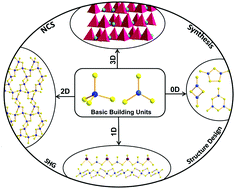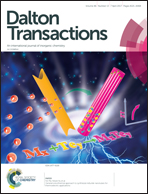Thioborates: potential nonlinear optical materials with rich structural chemistry
Abstract
Nonlinear optical (NLO) crystal materials with good performance are urgently needed. Various compounds have been explored to date. Metal chalcogenides and borates are common sources of potential NLO materials with desirable properties, particularly in the IR and UV regions, respectively. However, these two types of crystals have their specific drawbacks. Thioborates, as an emerging system, have unique advantages by combining the merits of borates and sulfides, i.e., the high laser damage thresholds and rich structural diversity of borates with large optical nonlinearity and the favorable transparency range of sulfides. However, only a limited number of thioborates are known. This paper summarizes the known thioborates according to structural motifs that range from zero-dimension to three-dimension, most of which are formed by sharing corners of the basic building units (BS3)3− and (BS4)5−. Although nearly one-third of the known thioborates are noncentrosymmetric, most of their properties, especially their NLO behaviors, are unexplored. Further attempts and additional investigations are required with respect to design syntheses, property improvements and micro-mechanism studies.

- This article is part of the themed collection: 2017 Frontier and Perspective articles


 Please wait while we load your content...
Please wait while we load your content...